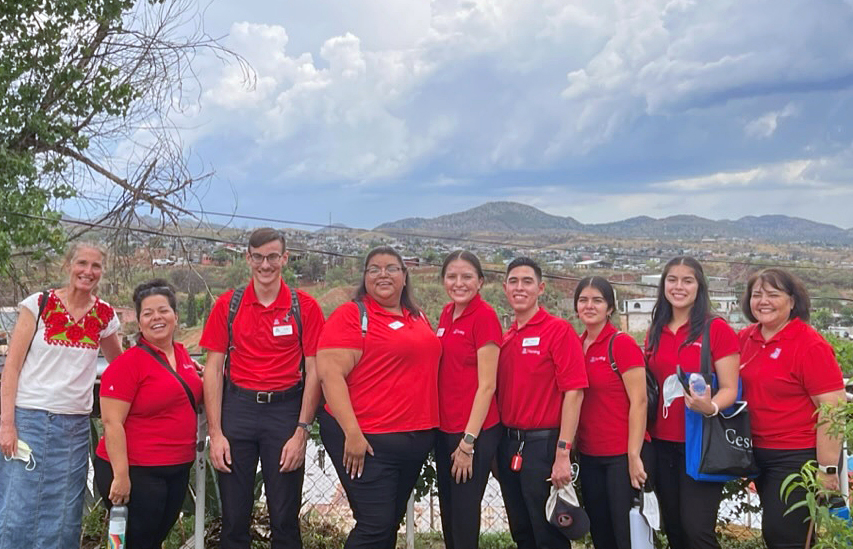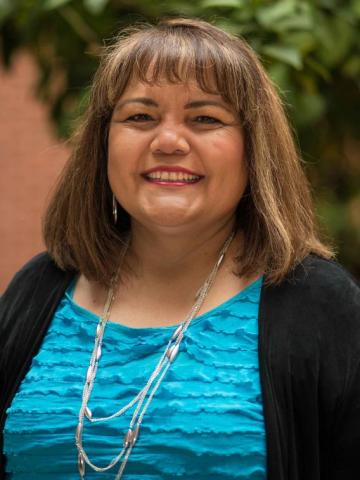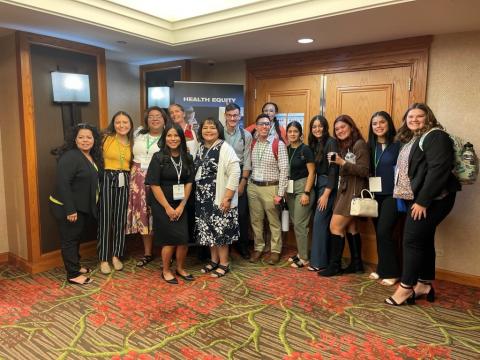UArizona Nursing Professor Linda Perez Discusses Health Equity and the Importance of Hispanic Heritage Month
Linda Perez 1.jpg

National Hispanic Heritage Month is celebrated every year between September 15 and October 15. It’s a time when the University of Arizona recognizes its status as a Hispanic Serving Institution and celebrates the Hispanic communities we serve here in Arizona and throughout our region.
At the College of Nursing, which remains committed to advancing equity, diversity, and inclusion, it’s also a time to celebrate our diverse faculty and student body, and to recognize ways we can advance cultural and inclusive experiential learning. It’s a pivotal job, considering of the 3 million registered nurses, only 5.4% were Hispanic. As a 2018 member of the Hispanic Serving Health Professions Schools – and one of only four nursing schools that are part of the organization – UArizona Nursing continues to build a better path forward to address healthcare challenges and promote health equity and inclusiveness.
We recently caught up with Principal Lecturer Linda Perez, RN, to hear her thoughts on the importance of Hispanic Heritage Month to her both personally and professionally, and the state of the college. Perez wanted to be part of health care from a young age. A natural caregiver, she cared for ailing family members and for her aging grandparents. “It was in my nature to go that way,” she says. “I fell in love with nursing once I started with it. It’s a career that’s given a lot of different opportunities.”
“I think it’s wonderful that it’s recognized. It’s great that it was a day, then a week, and now a month. The recognition is important, especially given our geographic location to the border and the number of students that we have here to help celebrate what is representative of our community," ~ Linda Perez, RN, Principal Lecturer
Over the years, Perez has been a med-surge nurse, a travel nurse, an ICU nurse, a medical malpractice nurse consultant for a law firm, a kidney transplant coordinator, and an endoscopy nurse at St. Mary’s Hospital, where she eventually advanced into management. “Then a friend of mine said, ‘Linda, you’re always teaching, you’re always helping students, why don’t you come try your hand in teaching?’” she says. “And now I’ve been here at the College of Nursing for 14 years.”
How do you feel about Hispanic heritage Month?
I think it’s wonderful that it’s recognized. It’s great that it was a day, then a week, and now a month. The recognition is important, especially given our geographic location to the border and the number of students that we have here to help celebrate what is representative of our community.

Of three million RNs, only 5.4% are Hispanic. What do you think of those numbers and what do you think can be done to correct that disparity?
That is the sole purpose of the Arizona Nursing Inclusive Excellence (ANIE) program when we initially started it, and that’s why I’ve been a part of that. That’s been huge in trying to cultivate students that are of a minority or underrepresented to feel like we can do it, that they do belong, that they can make a difference with the patient outcomes of the future. Because their patients see nurses that look like them and represent them, they feel like they have an advocate and therefore patient care, we know, will improve.
It’s understanding culture, the idiosyncrasies within patients, and the language. These students understand the respect that is needed as part of the culture. As a college, we must continue to work to cultivate that. The problem is our program is so competitive that we bring in so many people from other states that we knock out our own community people that would be wonderful nurses. We’re trying to implement the holistic admissions process, and I’m currently working to change the metrics so that it’s not as GPA-focused as it’s been. It’s gotten better but I think it could be better.

What are some of the benefits of the ANIE program?
ANIE has fostered a sense of belonging fir these students, which is one of the biggest things that has helped them thrive. In working with them, it obviously gets very difficult at times. They get frustrated and worry that they can’t do it. It’s important having a faculty mentor that can push them along and say, ‘Yes, you can.’ One of the biggest things that has come from these underrepresented students is resilience. Because they have resilience, they’re willing to continue to try.
Part of ANIE being part of a Hispanic Serving Institute is trying to help students at a younger age to prepare them for a college trajectory and be stronger in some of the STEM fields. What our pre-nursing students often struggle with is chemistry, math, physiology, and so we need to be able to try and strengthen that within high schools so that they can prepare better for college. In the long run, that’s what we need to do. That was one part of when I was a fellowship at the HSI was looking at how do we help younger students in high school and how do we strengthen STEM for our underrepresented students so that they can equally have the same opportunities as others to get into those fields.
How do you feel about the efforts the college has made to work on issues of diversity and inclusion?
I’m so happy that it’s part of our strategic plan. We need to advance the initiatives; we need to advance these directives. We’ve scratched the surface. We’ve done well and had extremely good outcomes with our ANIE program. We know that programs like this are successful for students, but this shouldn’t just be for a select few. We can only touch a few because of the limitations within the grant, but it would be wonderful if this was embedded into our curriculum on a regular basis.
In your teaching duties, what do you do to promote these goals?
In my courses as a course chair there’s a lot that I’ve learned. One of my projects thru the HSI Fellowship was to try and look at what’s called Cultural Competence and Cultural Pedagogy that you would infuse into the curriculum. How are we more aware? How are we going to apply this now? As I give my lectures, I try to infuse how would we approach it with different cultures. How does your assessment look on somebody who is not white? What features are you really looking for, and we’ve incorporated asking questions right off the bat, such as ‘Are there any cultural or spiritual preference that I may need to know that may impact assessment?’ We’ve added wording for the students to use so that they’re bringing that up right at the beginning, along with asking their allergies. We’re making them aware of those preferences for how to address people in a polite and respectful way. We’re showing them how to deliver patient-centered care that is not assuming that because somebody has come in that they’re going to have disparities but being willing to address them if they do happen.

